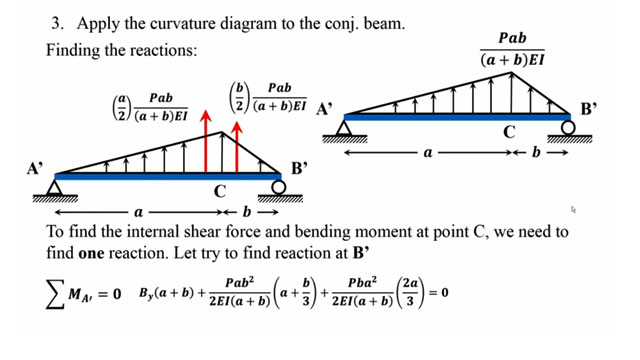Go through this useful construction video tutorial to learn how to estimate the quantity for different types of arches like semi circular arch, full circular arch and segmental arches.
Conjugate beam is also known as the imaginary beam that contains the similar dimensions (length) as that of the original beam but load at any point on the conjugate beam is equivalent with the bending moment at that point divided by EI.
In the arena of Structural Analysis, the deformation of beams under different loading is analyzed to find out their slope and deflection through various geometric methods. The conjugate beam method belongs to one of these geometric methods. Because the meaning of the term "Conjugate" is 'related or reciprocal', this method highlights substituting a real beam with an reciprocal imaginary beam for analysis.
This method is particularly beneficial for simply supported beams. For other beams, like cantilevers or overhanging beams, artificial constraints should be used.
Characteristics of Conjugate Beam
- The length of a conjugate beam is equivalent to the length of the actual beam at all times.
- The load on the conjugate beam refers to the M/EI diagram of the loads on the actual beam.
- A simple support for the real beam stands simple support for the conjugate beam.
- A fixed end for the real beam turns out to be free end for the conjugate beam.
- The point of zero shear for the conjugate beam coincides with a point of zero slope for the real beam.
- The point of maximum moment for the conjugate beam coincides with a point of maximum deflection for the real beam.
Video Courtesy : CTSCIVIL

~~~~~~~~~~~~~~~~~~~~~~~~~
Published ByRajib Dey
www.constructioncost.co
~~~~~~~~~~~~~~~~~~~~~~~~~
No comments:
Post a Comment